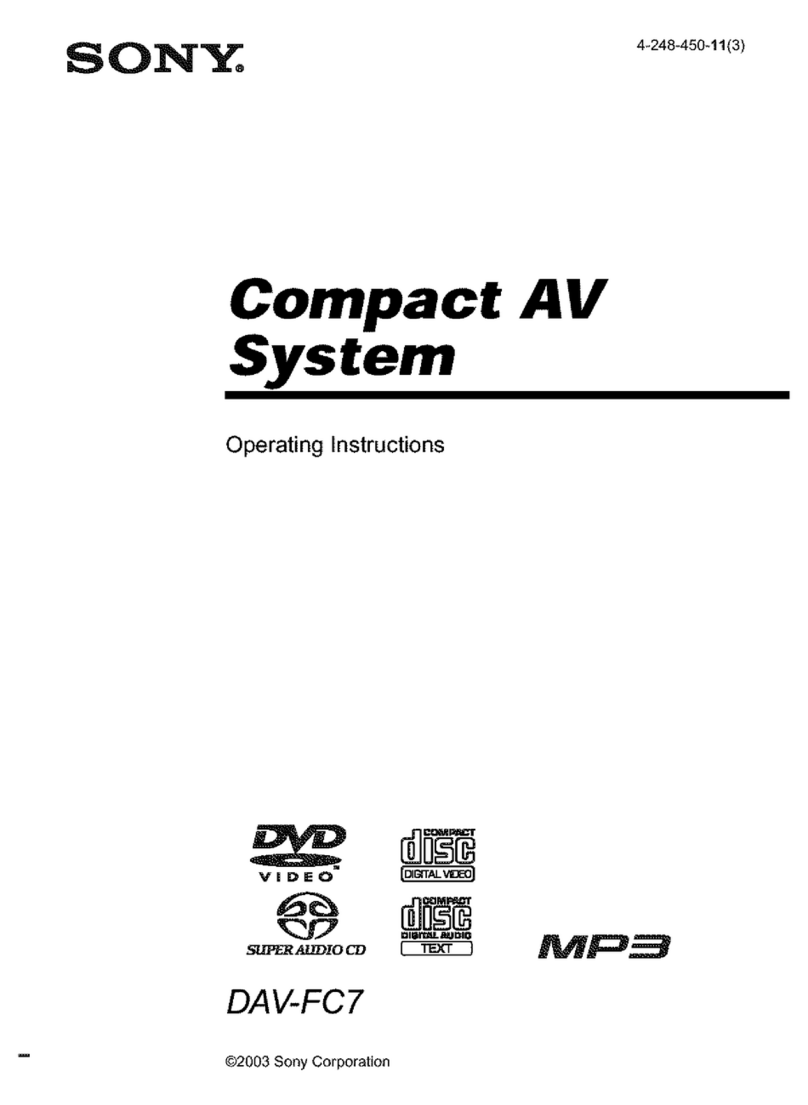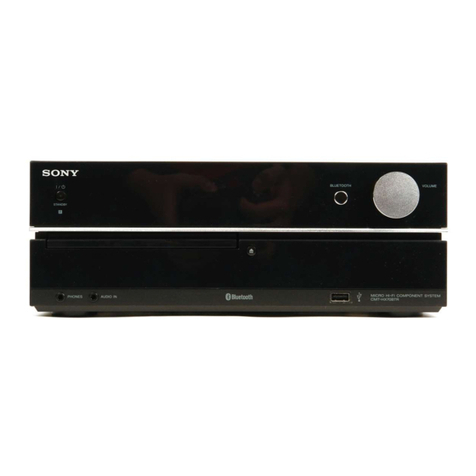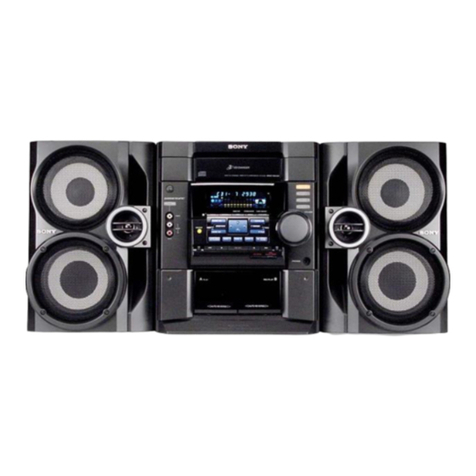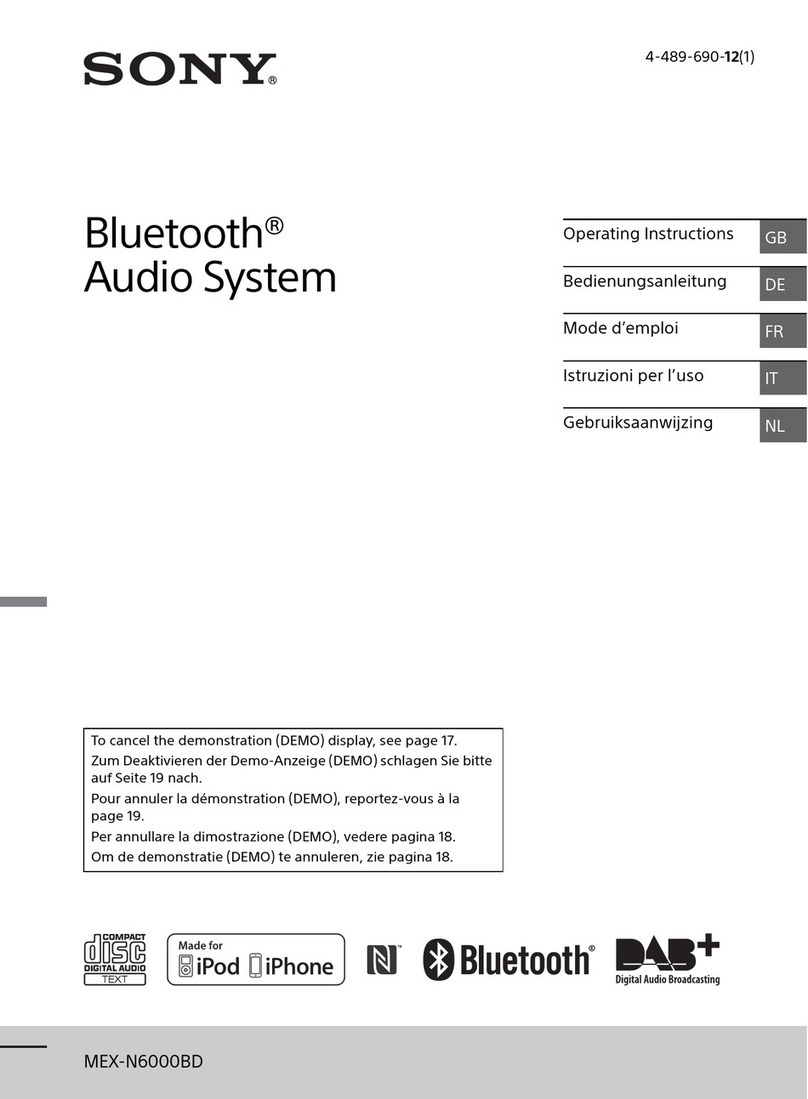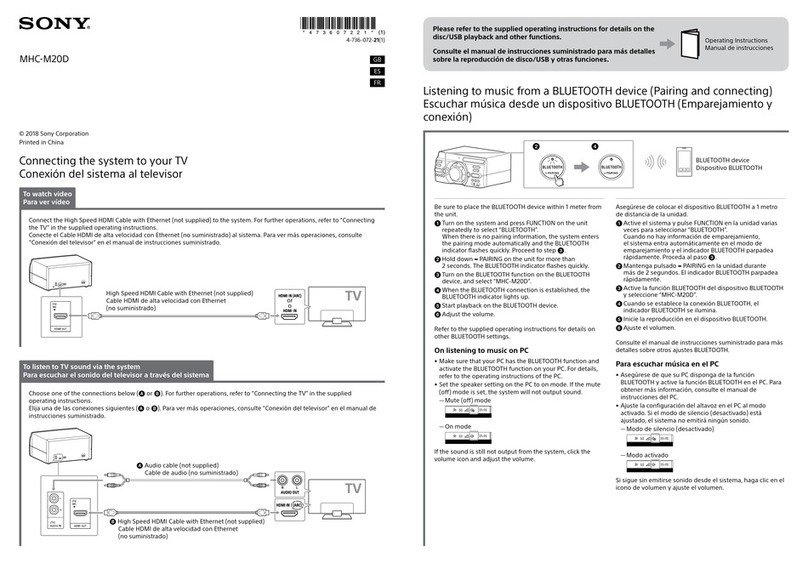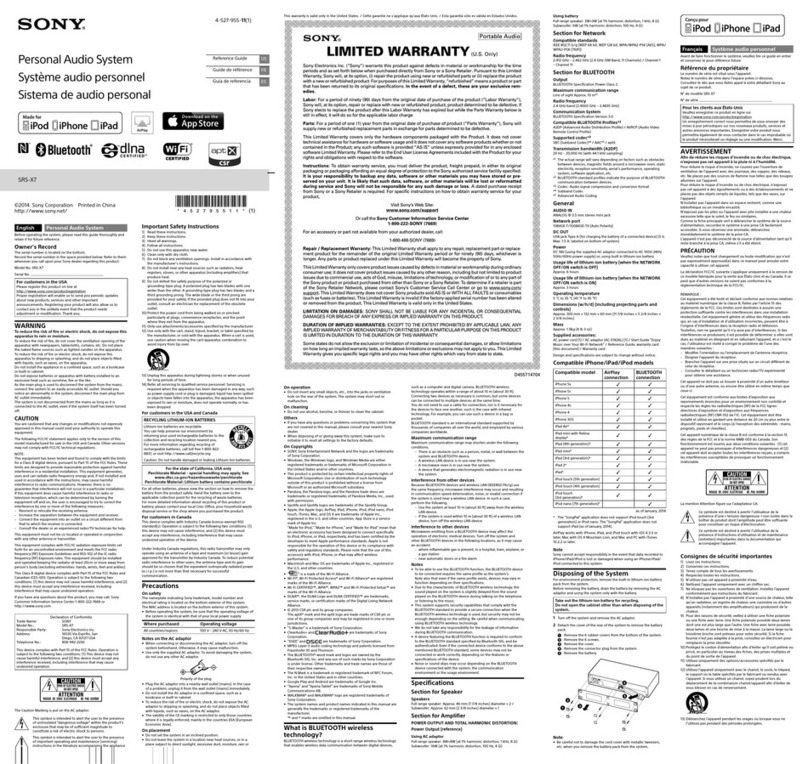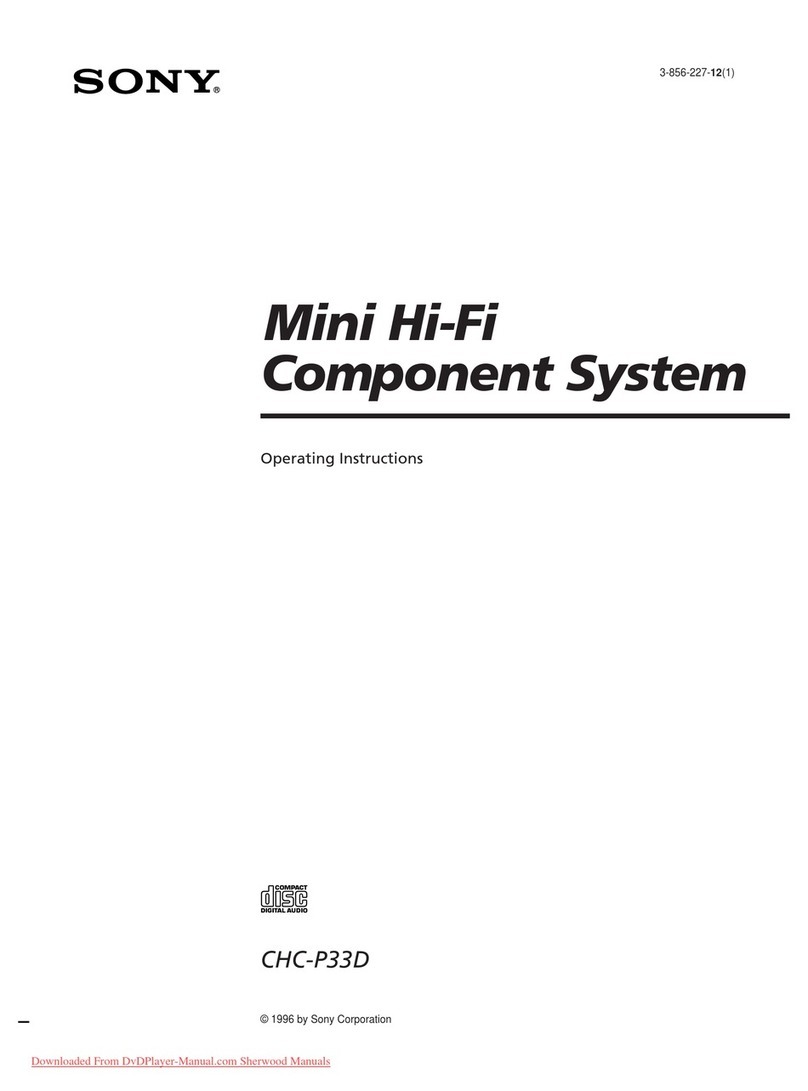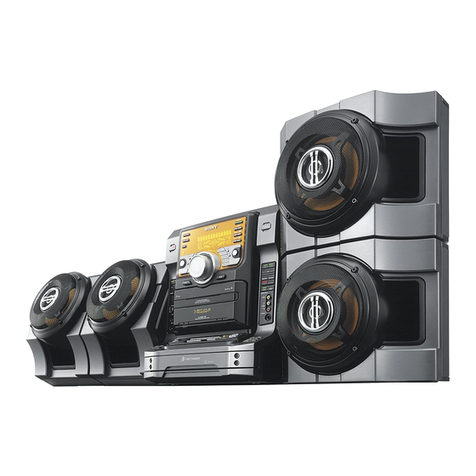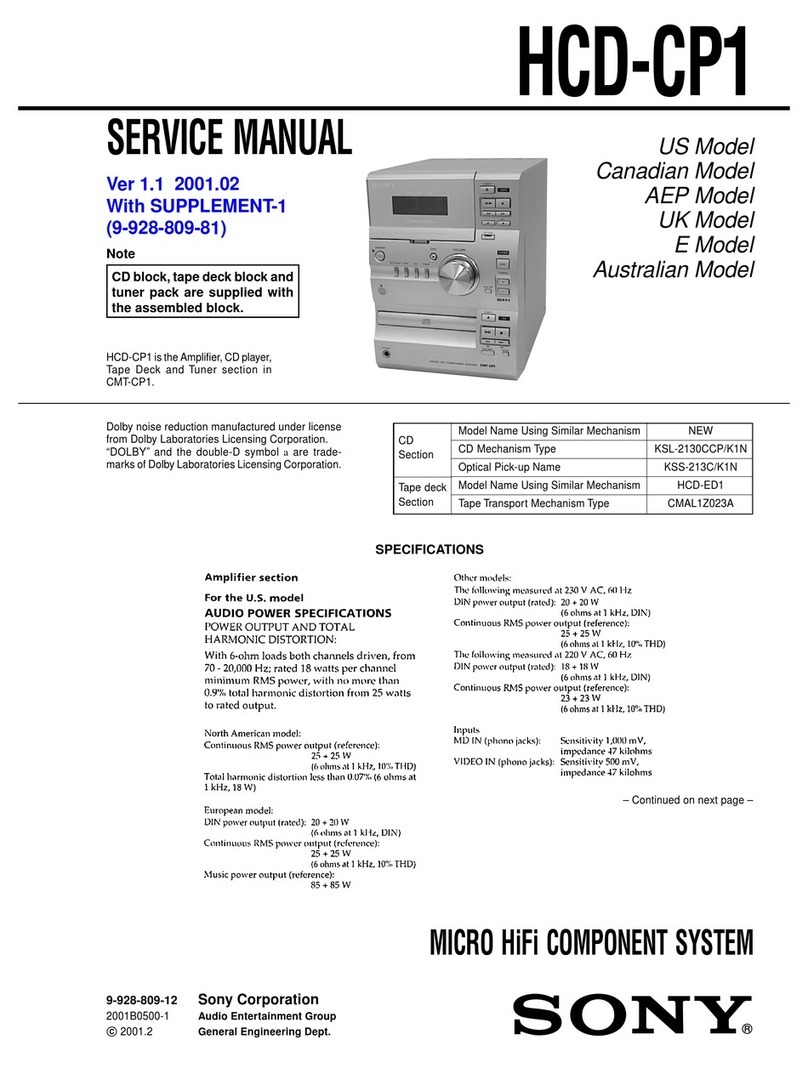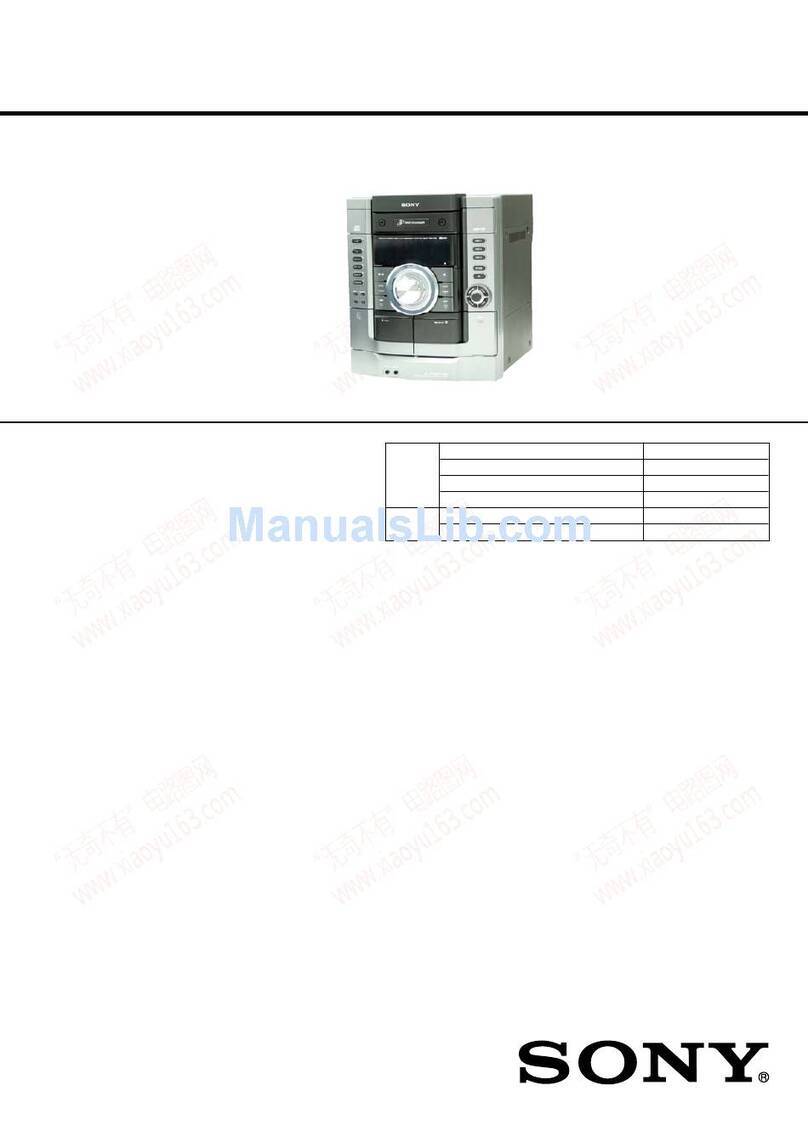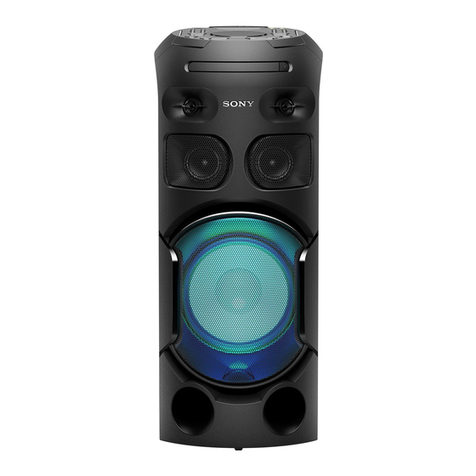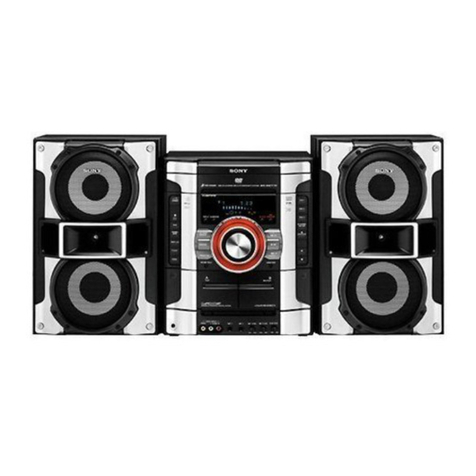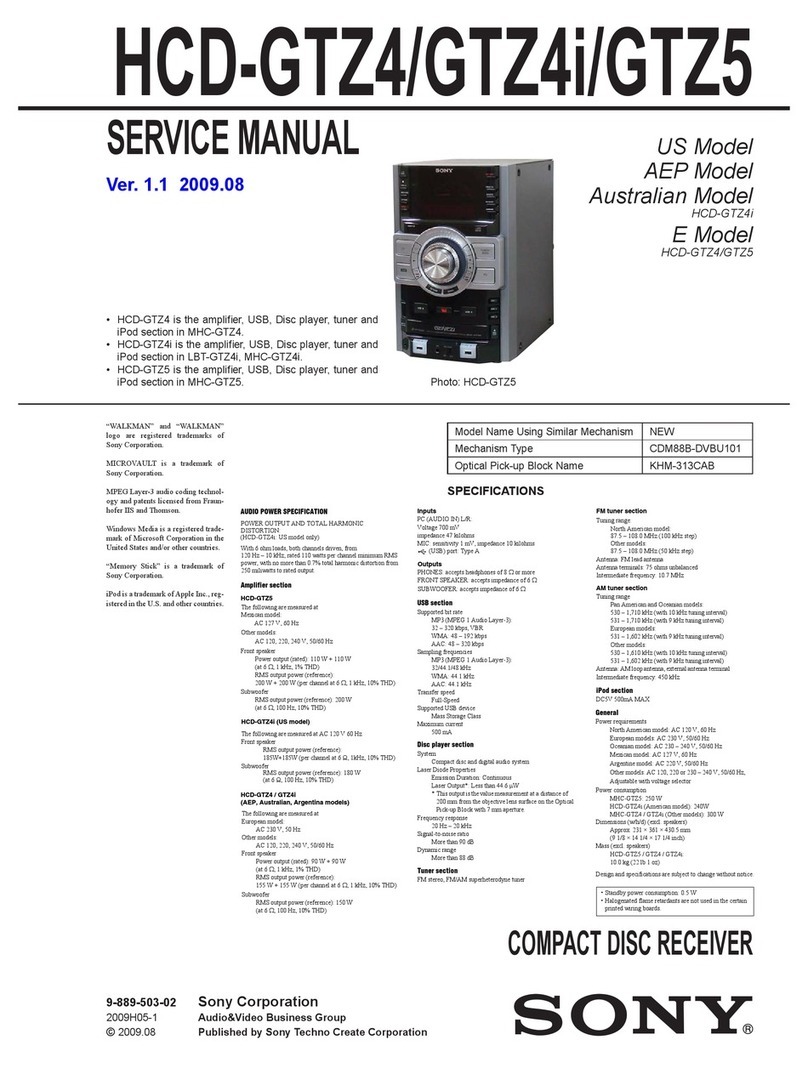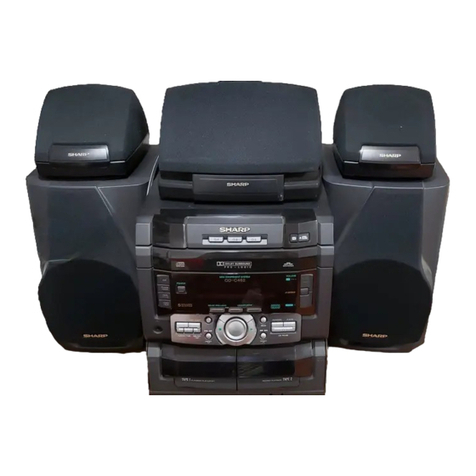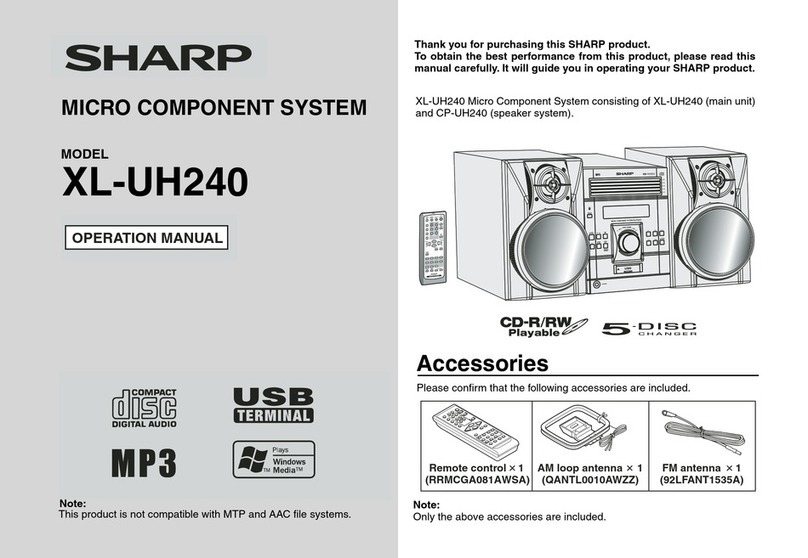
SERVICE MANUAL
Sony Corporation
Published by Sony EMCS (Malaysia) PG Tec
HCD-SHAKE7
MINI HI-FI COMPONENT SYSTEM
9-890-619-03
2013K80-1
© 2013.11
E Model
Ver. 1.2 2013.11
• HCD-SHAKE7 is the tuner, USB, CD player, Bluetooth, NFC
and amplifier section in SHAKE-7.
SPECIFICATIONS
CD Section
Model Name Using Similar Mechanism NEW
CD Mechanism Type CDM90-DVBU202//M
Optical Pick-up Name CMS-S76RFS7G
Amplifier section
The following are measured at
Mexican model:
AC 120 V – 240 V, 60 Hz
Other models:
AC 120 V – 240 V, 50/60 Hz
Tweeters/woofers
Power Output (rated):
320 W + 320 W (at 4 ohms, 1 kHz,
1% THD)
RMS output power (reference):
520 W + 520 W (per channel at
4 ohms, 1 kHz)
Mid speakers
Power Output (rated):
240 W + 240 W (at 5 ohms, 1 kHz,
1% THD)
RMS output power (reference):
385 W + 385 W (per channel at
5 ohms, 1 kHz)
Subwoofers
Power Output (rated):
320 W + 320 W (at 4 ohms, 100 Hz,
1% THD)
RMS output power (reference):
520 W + 520 W (per channel at
4 ohms, 100 Hz)
Inputs
TV/DVD/SAT (AUDIO IN) L/R
Voltage 2 V, impedance 47 kilohms
PC/GAME (AUDIO IN) L/R
Voltage 2 V, impedance 47 kilohms
MIC
Sensitivity 1 mV, impedance 10 kilohms
A (USB), B (USB) port: Type A
USB section
Supported bit rate
WMA:
48 kbps – 192 kbps, VBR, CBR
AAC:
48 kbps – 320 kbps, VBR, CBR
Sampling frequencies
WMA: 44.1 kHz
AAC: 44.1 kHz
Supported USB device
Mass Storage Class
Maximum current
500 mA
Disc/USB section
Supported bit rate
MPEG1 Layer-3:
32 kbps – 320 kbps, VBR
MPEG2 Layer-3:
8 kbps – 160 kbps, VBR
MPEG1 Layer-2:
32 kbps – 384 kbps, VBR
Sampling frequencies
MPEG1 Layer-3:
32 kHz/44.1 kHz/48 kHz
MPEG2 Layer-3:
16 kHz/22.05 kHz/24 kHz
MPEG1 Layer-2:
32 kHz/44.1 kHz/48 kHz
Disc player section
System
Compact disc and digital audio system
Laser Diode Properties
Emission Duration: Continuous
Laser Output*: Less than 44.6 µW
* This output is the value
measurement at a distance of
200 mm from the objective lens
surface on the Optical Pick-up
Block with 7 mm aperture.
Frequency response
20 Hz – 20 kHz
Signal-to-noise ratio
More than 90 dB
Dynamic range
More than 88 dB
Tuner section
FM stereo, FM/AM superheterodyne tuner
Antenna:
FM lead antenna
AM loop antenna
FM tuner section
Tuning range
87.5 MHz – 108.0 MHz
(50 kHz step)
AM tuner section
Tuning range
Pan American models:
531 kHz – 1,710 kHz (9 kHz step)
530 kHz – 1,710 kHz (10 kHz step)
Saudi Arabian model:
531 kHz – 1,602 kHz (9 kHz step)
Other models:
531 kHz – 1,602 kHz (9 kHz step)
530 kHz – 1,610 kHz (10 kHz step)
Bluetooth section
Communication system
Bluetooth Standard version 3.0 +
EDR (Enhanced Date Rate)
Output
Bluetooth Standard Power Class 2
Maximum communication range
Line of sight approx. 10m1)
Frequency band
2.4 GHz band (2.4000 GHz – 2.4835 GHz)
Modulation method
FHSS (Freq Hopping Spread Spectrum)
Compatible Bluetooth profiles2)
A2DP (Advanced Audio Distribution
Profile)
AVRCP 1.3 (Audio Video Remote
Control Profile)
Supported codecs
SBC (Sub Band Codec)
AAC (Advanced Audio Coding)
1) The actual range will vary depending on
factors such as obstacles between devices,
magnetic fields around a microwave oven,
static electricity, reception sensitivity,
antenna’s performance, operating system,
software application, etc.
2) Bluetooth standard profiles indicate the
purpose of Bluetooth communication
between devices.
General
Power requirements
Mexican model:
AC 120 V – 240 V, 60 Hz
Other models:
AC 120 V – 240 V, 50/60 Hz
Power consumption
420 W
Dimensions (w/h/d) (excl. speakers)
(Approx.) (Except AR)
500 mm × 220 mm × 380 mm
Dimensions (w/h/d) (excl. speakers) (AR)
500 mm × 220 mm × 380 mm
Mass (excl. speakers) (Approx.) (Except AR)
8.4 kg
Mass (excl. speakers) (AR)
8.4 kg
Supplied accessories
Remote control (1)
R6 (Size AA) batteries (2)
FM lead/AM loop antenna (1)
Design and specifications are subject to
change without notice.
License and Trademark Notice
• “WALKMAN” and “WALKMAN” logo
are registered trademarks of Sony Corpo-
ration.
• MPEG Layer-3 audio coding technology
and patents licensed from Fraunhofer IIS
and Thomson.
• Windows Media is either a registered
trademark or trademark of Microsoft
Corporation in the United States and/or
other countries.
• This product is protected by certain
intellectual property rights of Microsoft
Corporation. Use or distribution of
such technology outside of this product
is prohibited without a license from
Microsoft or an authorized Microsoft
subsidiary.
• The Bluetooth® word mark and logos are
registered trademarks owned by Bluetooth
SIG, Inc. and any use of such marks by
Sony Corporation is under license. Other
trademarks and trade names are those of
their respective owners.
• The N Mark is a trademark or registered
trademark of NFC Forum, Inc. in the
United States and in other countries.
• Android is a trademark of Google Inc.
• All other trademarks and registered
trademarks are of their respective holders.
In this manual, ™ and ® marks are not
specified.

